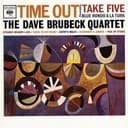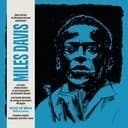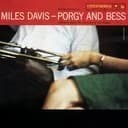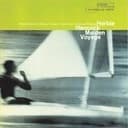Theory, Formula, and Intervallic Structure
The C♯ bebop major scale follows the interval formula of 2-2-1-2-1-1-2-1 semitones, producing the intervallic structure: root (1), major second (2), major third (3), perfect fourth (4), perfect fifth (5), augmented fifth (♯5), major sixth (6), and major seventh (7). The notes C♯, D♯, E♯ (F), F♯, G♯, G𝄪 (A), A♯, and B♯ (C) create an eight-note octatonic scale where the chromatic passing tone (G𝄪/A natural) bridges the gap between the fifth (G♯) and sixth (A♯) degrees. This strategic placement ensures that when playing consecutive eighth notes in 4/4 time, chord tones (C♯, E♯, G♯, B♯) consistently fall on strong beats, creating the rhythmic alignment that defines authentic bebop phrasing and allows improvisers to maintain harmonic clarity during rapid scalar passages.
The theoretical complexity of the C♯ bebop major scale stems from its requirement of double sharps—G𝄪 (G double-sharp, enharmonically equivalent to A natural) and B♯ (B-sharp, enharmonically equivalent to C natural)—which can prove challenging to read quickly in performance situations. While theoretically correct within the C♯ major key signature (seven sharps), this notation presents practical obstacles for sight-reading and real-time improvisation. The intervals remain identical to all bebop major scales: whole-whole-half-whole-half-half-whole-half steps, maintaining the characteristic bebop major sound regardless of enharmonic spelling. Understanding this formula allows jazz pianists to transpose the bebop major scale concept through all twelve keys, developing comprehensive scalar vocabulary for navigating major chord progressions throughout the harmonic spectrum.
Enharmonic Relationship with D♭ Bebop Major and Notational Considerations
The C♯ bebop major scale is enharmonically equivalent to the D♭ bebop major scale, meaning both scales produce identical pitches on the piano but utilize different notation systems based on key signature conventions. The D♭ bebop major scale (D♭-E♭-F-G♭-A♭-A-B♭-C-D♭) employs five flats and requires only one natural (A natural) for its chromatic passing tone, making it significantly easier to read and internalize compared to C♯ bebop major's seven sharps plus double sharps. For this reason, most jazz educators, method books, and professional musicians default to the D♭ notation when working in this tonal center, reserving C♯ notation primarily for theoretical discussions or when the harmonic context specifically demands sharp notation.
Understanding enharmonic equivalence represents a crucial aspect of advanced music theory and practical jazz performance. While C♯ and D♭ sound identical on equally-tempered instruments like the piano, the choice between them depends on the surrounding harmonic context, key signature, and voice-leading considerations. In progressions where C♯ functions as the dominant of F♯ major (a key with six sharps), or in pieces written primarily in sharp keys, the C♯ spelling might appear more logical from a harmonic analysis perspective. However, the practical difficulties of reading and executing lines with double sharps at typical bebop tempos mean that even in sharp-key contexts, many pianists mentally convert to D♭ for improvisational fluency. This pragmatic approach to enharmonic spelling reflects the performance-oriented nature of jazz, where readability and execution speed often take precedence over theoretical purity.
Application in Jazz Improvisation Over C♯ Major Seventh Chords
The C♯ bebop major scale serves as an improvisational tool over C♯maj7 (C♯ major seventh) and C♯6 (C♯ major sixth) chords in jazz contexts, particularly in progressions where C♯ functions as a tonic major chord or in modulations to sharp keys. When soloing over C♯ major harmony in tunes that modulate through various key centers—such as "Giant Steps" by John Coltrane, which features rapid modulations including C♯ major—jazz pianists apply bebop major scale principles to create flowing eighth-note lines that outline the chord structure (C♯-E♯-G♯-B♯ for C♯maj7) while incorporating characteristic chromatic passing tones. The eight-note structure ensures that chord tones consistently fall on strong beats (beats 1, 2, 3, 4) while passing tones fall on weak beats, creating natural rhythmic emphasis that reinforces harmonic clarity and generates the forward momentum essential to bebop improvisation.
In practice, many jazz musicians treat C♯ and D♭ interchangeably when improvising, recognizing their enharmonic equivalence and choosing notation based on convenience rather than theoretical correctness. When encountering a C♯maj7 chord in a real book or lead sheet, a pianist might mentally reference their practiced D♭ bebop major scale patterns while physically playing over the C♯ harmony, demonstrating the flexible, practical approach that characterizes professional jazz performance. The scale works particularly well in ii-V-I progressions resolving to C♯ major, such as D♯m7-G♯7-C♯maj7, where the bebop major scale on the resolution provides satisfying melodic cadences. Advanced players combine the C♯ bebop major scale with related scales like C♯ major and C♯ major pentatonic to create harmonic variety and color within extended major chord passages.
Piano Practice Techniques, Fingering, and Technical Development
Effective piano practice of the C♯ bebop major scale requires establishing consistent fingering patterns that accommodate the eight-note structure while navigating the predominantly black-key topology of C♯ major (seven sharps). For the right hand ascending from C♯, use the fingering: 2(C♯)-3(D♯)-1(E♯/F)-2(F♯)-3(G♯)-4(G𝄪/A)-1(A♯)-2(B♯/C)-3(C♯), carefully positioning the thumb under after the third finger and maintaining even articulation across the chromatic passing tone. Left hand ascending employs: 3(C♯)-2(D♯)-1(E♯)-4(F♯)-3(G♯)-2(G𝄪)-1(A♯)-3(B♯)-2(C♯), ensuring smooth thumb crossings and consistent touch. Practice hands separately initially, focusing particularly on the chromatic G♯ to G𝄪 (A) to A♯ passage, then gradually integrate hands together in parallel motion before advancing to contrary motion and more complex technical patterns.
Given the practical challenges of reading and executing the C♯ bebop major scale with its double sharps, many pianists benefit from parallel practice of both the C♯ and D♭ bebop major scale fingerings, developing facility with both enharmonic spellings. Set a metronome to 60-80 BPM and practice the scale in strict eighth notes, deliberately accenting chord tones (C♯, E♯, G♯, B♯) on beats 1, 2, 3, 4 while playing passing tones (D♯, F♯, A♯) and the chromatic G𝄪 (A) lighter on the upbeats. This downbeat emphasis drill develops the rhythmic awareness essential for bebop improvisation, training both ear and hands to feel how chord tones align naturally within the eight-note structure. Progress through different rhythmic groupings (triplets, sixteenth notes, 3+3+2 patterns), practice starting the scale from different notes within the octave, and apply the scale to backing tracks in C♯ major to develop real-world improvisational fluency. Recording yourself and critically listening to timing, evenness, and musicality provides valuable feedback for continuous improvement.
Relationships to Other C♯ and D♭ Scales and Modes
Understanding the C♯ bebop major scale's relationship to other scales deepens theoretical knowledge and expands improvisational vocabulary. The scale shares its root with C♯ bebop dominant, which adds a chromatic passing tone to C♯ Mixolydian (the dominant mode) rather than C♯ major, creating parallel bebop scales appropriate for different chord qualities—bebop major for major seventh chords, bebop dominant for dominant seventh chords. The C♯ bebop major scale relates directly to C♯ major, differing only in the addition of the chromatic passing tone between the fifth and sixth degrees. Its enharmonic equivalent, D♭ bebop major, provides identical sonic results with more practical notation, making it the preferred choice for most jazz applications in this tonal center.
Advanced jazz students explore connections between bebop major scales and other modal and chromatic resources. The relationship between C♯ bebop major and modes like C♯ Lydian (which features a raised fourth instead of an augmented fifth) reveals how different chromatic alterations create distinct harmonic colors over major tonalities. Comparing C♯ bebop major to D♭ major and its modes illustrates enharmonic theory in practical application. Jazz pianists who master bebop major scales in multiple keys—including challenging sharp keys like C♯, F♯, and B major—develop comprehensive scalar vocabulary that supports sophisticated harmonic navigation across all jazz styles from traditional bebop through contemporary jazz fusion. This systematic approach to scale study, encompassing enharmonic equivalents, modal relationships, and chromatic variations, builds the theoretical foundation and technical facility necessary for confident, creative jazz improvisation in any key or harmonic context.





